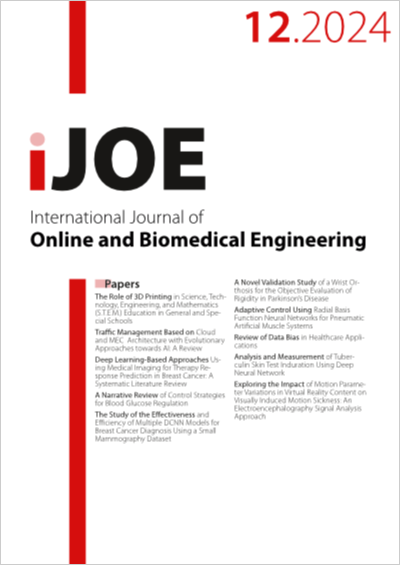The Role of 3D Printing in Science, Technology, Engineering, and Mathematics (S.T.E.M.) Education in General and Special Schools
DOI:
https://doi.org/10.3991/ijoe.v20i12.48931Keywords:
3D Printing, STEM Education, Digital Applications, Inclusive Learning, Educational RoboticsAbstract
This paper explores the significant role of 3D printing and digital applications in enhancing science, technology, engineering, and mathematics (STEM) education in both general and special schools. With the advent of the Fourth Industrial Revolution, the integration of these technologies into educational systems has become increasingly critical. This study reviews various study works that demonstrate how 3D printing technology enriches learning by fostering critical thinking and problem-solving skills and offering a more interactive and engaging educational experience. Special attention is given to its impact in special education, where it facilitates inclusive learning and aids in creating tailored educational tools. A case study from a vocational high school in Greece is presented, showcasing the successful implementation of a 3D printing and educational robotics club. This club highlights the practicality and effectiveness of 3D printing in enhancing student engagement and learning outcomes. The paper concludes by emphasizing the transformative potential of 3D printing in preparing students for future challenges and advocating for its wider adoption in STEM education.
Downloads
Published
How to Cite
Issue
Section
License
Copyright (c) 2024 Chrysovalantis Kefalis, Constantine Skordoulis, Athanasios Drigas

This work is licensed under a Creative Commons Attribution 4.0 International License.


